Being There Blu-ray Movie
HomeBeing There Blu-ray Movie 
Criterion | 1979 | 130 min | Rated PG | Mar 21, 2017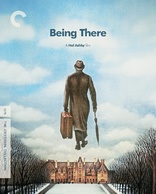
Movie rating
8.2 | / 10 |
Blu-ray rating
| Users | 4.0 | |
| Reviewer | 4.5 | |
| Overall | 4.0 |
Overview
Being There (1979)
A simple, sheltered gardener becomes an unlikely trusted advisor to a powerful businessman and an insider in Washington politics.
Starring: Peter Sellers, Shirley MacLaine, Melvyn Douglas, Jack Warden, Richard DysartDirector: Hal Ashby
| Drama | 100% |
| Comedy | Insignificant |
Specifications
Video
Video codec: MPEG-4 AVC
Video resolution: 1080p
Aspect ratio: 1.85:1
Original aspect ratio: 1.85:1
Audio
English: LPCM Mono (48kHz, 24-bit)
Subtitles
English SDH
Discs
Blu-ray Disc
Single disc (1 BD)
Playback
Region A (locked)
Review
Rating summary
| Movie | 4.0 | |
| Video | 5.0 | |
| Audio | 5.0 | |
| Extras | 4.0 | |
| Overall | 4.5 |
Being There Blu-ray Movie Review
Reviewed by Dr. Svet Atanasov March 13, 2017Winner of Oscar Award for Best Actor in a Supporting Role, Hal Ashby's "Being There" (1979) arrives on Blu-ray courtesy of Criterion. The supplemental features on the disc include an original trailer for the film; deleted scenes and outtakes; audio excerpt from a recorded seminar with Hal Ashby; archival interviews with Peter Sellers; exclusive new documentary on the making of the film, featuring interviews with members of the production team; and more. The release also arrives with an illustrated leaflet featuring journalist and film historian Mark Harris' essay "American Cipher" and technical credits. In English, with optional English SDH subtitles for the main feature. Region-A "locked".

A stranger in a strange world
If you want to gently discredit a critic you dislike consider Hal Ashby’s film Being There. The film can be deconstructed in a variety of different ways and it is loaded with so much symbolism that it is virtually guaranteed that your target would miss something rather important while analyzing it. All you have to do is call out its ‘inexcusable’ omission. But you can actually do a lot better than this. You can demand that the critic provides a clear and logical explanation of the film’s final sequence. It is a brilliant trap and once the critic falls into it you can sit back, relax, and enjoy watching him self-destruct. Trust me, there is absolutely no way out of it.
The film opens up in a darkened room in a home somewhere in Washington D.C. where the middle-aged illiterate gardener Chance (Peter Sellers) is seen struggling to come to terms with the fact that his wealthy employer has suddenly passed away. Soon after, Chance is visited by two young lawyers who inform him that he will have to leave the property and move on with his life because his services are no longer required. But it turns out that Chance has never really had a life outside of the home and his only information about the world on the other side of the tall brick wall separating the garden from the street has come from the old TV set in his tiny room. So when the lawyers’ words finally sink in he suddenly becomes overwhelmed with suffocating fear and then for a short period of time tunes out.
Eventually, Chance places all of his belongings in a suitcase and heads down the street. At first the people and the massive noise confuse him, but later on the bright lights and colorful billboards engross him.
Somewhere in the city Chance stops in front of a TV shop and accidentally gets hit in the leg by a reckless limo driver. The driver’s concerned boss turns out to be Eve Rand (Shirley MacLaine), the wife of the powerful but gravely ill industrialist Benjamin Rand (Melvyn Douglas), and she politely invites Chance to come home with her so that the family doctor can examine his injury.
While staying in the massive Rand residence and getting his leg treated, Chance impresses Benjamin with his direct and refreshingly measured statements and against all odds the two men quickly develop a special bond. The homeless gardener then inspires Eve to fall in love again and even earns the admiration of the President (Jack Warden) after he pays an unexpected visit to his old friend and asks for his advice on a new policy to revive the country’s economy.
A big portion of the film is structured as a satire on socio-political values and the media in America. It basically promotes the idea that the country is ruled by an elite class of professional politicians and businessmen that has neutralized the media and transformed people into brainless consumers. Chance’s accidental entry into the private bubble of the elitists is very much like Alice’s arrival in Wonderland -- suddenly a whole new reality emerges with completely different gravity laws.
But this is where things gradually begin to change and the film casually veers off in a new direction. Indeed, the more Chance interacts with these people and the more they begin to appreciate his ‘genius’, the more it seems like there is an even bigger bubble in which no one actually has full control over anything. They imagine things and pretend to understand but are just as clueless as Chance is when he tries to answer their policy and management questions. So the revelation here is that while creating a lower class of brainless consumers the elitists have also permanently damaged themselves and created a closed system in which the only thing that everyone is fully aware of is the passing of time.
The final sequence flips the entire narrative and by doing so allows for a number of new and interesting interpretations. However, it is really up to you to decide if it truly has a special meaning or if it is just a smart trick to force you to revisit the film with a new set of expectations.
The film is based on Jerzy Kosinksi’s novel and a script by Bob Jones. Interestingly, Kosinski is still listed in the opening credits as the screenwriter despite the fact that the script he submitted to director Ashby was actually rejected. (In 1991, Kosinksi ended his life after multiple allegations of plagiarism. According to multiple sources, he had plagiarized a Polish book to write Being There).
Being There Blu-ray Movie, Video Quality 
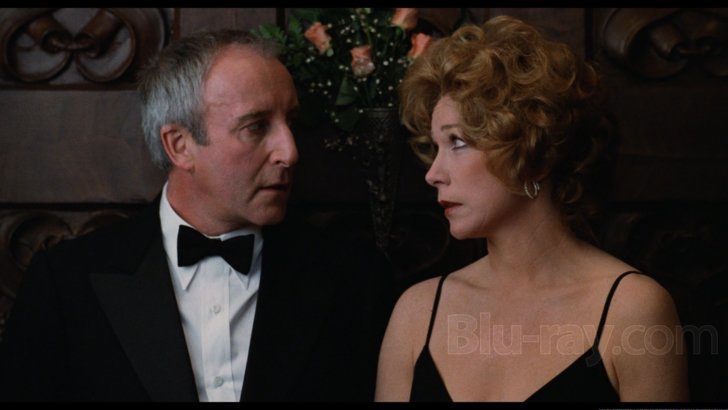
Presented in its original aspect ratio of 1.85:1, encoded with MPEG-4 AVC and granted a 1080p transfer, Hal Ashby's Being There arrives on Blu-ray courtesy of Criterion.
The following text appears inside the leaflet provided with this Blu-ray release:
"This new digital transfer was created in 4K resolution on a Lasergraphics Director film scanner from the 35mm original camera negative at Motion Picture Imaging in Burbank, California, and color graded under the supervision of cinematographer Caleb Deschanel. Thousands of instances of dirt, debris, scratches, splices, and warps were manually removed using MTI Film's DRS, while Digital Vision's Phoenix was used for jitter, flicker, small dirt, grain, and noise management. The monaural soundtrack was remastered from the 35mm original magnetic track. Clicks, thumps, hiss, hum, and crackle were manually removed using Pro Tools HD and iZotope RX.
Transfer supervisor: Lee Kline.
Colorist: Sheri Eisenberg/Deluxe, Culver City, CA.
Scanning: Chris Gillespie, Michael Borquez/ MPI, Burbank, CA."
I did some direct comparisons with the first release of Being There that Warner Bros. Home Entertainment produced in 2009 and can confirm that there are massive improvements in all major areas we typically address in our reviews. However, my guess is that if you view your films on a large screen (or use a projector) you will be most pleased with the vastly improved depth. There really is a sea of difference between the old release and this upcoming release because the 4K transfer essentially wipes out the flatness that is so prominent on the old release. In other words, there is better detail, better shadow definition, and various highlights and nuances that are lost on the old release. The color scheme is also superior. There is a wider range of healthy and lusher primaries and more properly balanced nuances. Grain is wonderfully exposed and resolved. There are no traces of compromising sharpening adjustments. Finally, overall image stability is outstanding. (Note: This is a Region-A "locked" Blu-ray release. Therefore, you must have a native Region-A or Region-Free player in order to access its content).
Being There Blu-ray Movie, Audio Quality 
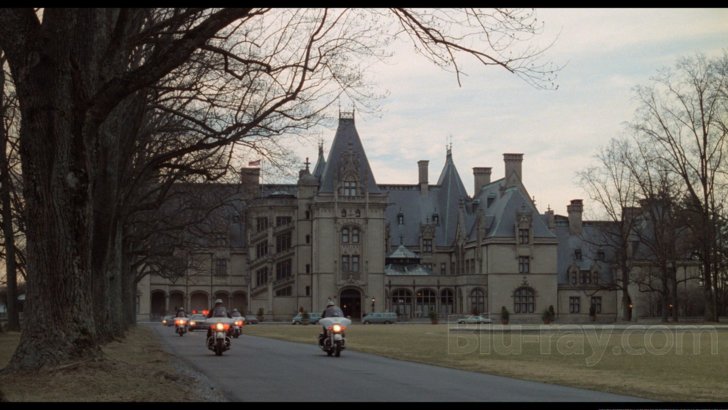
There is only one standard audio track on this Blu-ray release: English LPCM 1.0. Optional English SDH subtitles are provided for the main feature.
Johnny Mandel's score has a very important role. Thankfully, the lossless track allows it to effortlessly control the atmosphere of the film and ease key transitions. Balance and fluidity are outstanding. Also, there are no mixing/digital errors to report in our review.
Being There Blu-ray Movie, Special Features and Extras 
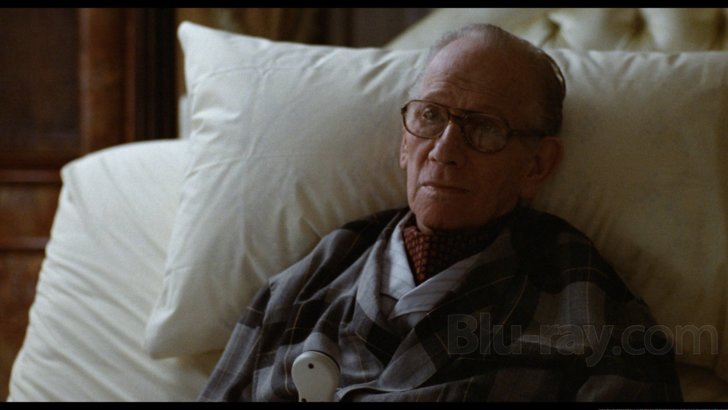
- Trailer and TV Spots - original U.S. theatrical trailer and TV Spots for Being There. In English, not subtitled. (3 min, 1080p).
- Promo Reel - a hilarious archival promo piece for Being There featuring director Hal Ashby and Peter Seller. In English, not subtitled. (3 min, 1080p).
- Deleted Scenes and Outtakes - a collection of deleted scenes, outtakes, and an alternate ending. In English not subtitled.
1. Deleted Scene 1: Kids Playing Basketball. (2 min, 1080p).
2. Deleted Scene 2: Bedroom. (1 min, 1080p).
3. Alternate Ending. (3 min, 1080p).
4. Outtakes. (4 min, 1080p).
- The Making of Being There - this brand new documentary examines the genesis of Being There and the unusual structure of its narrative as well as Hal Ashby's working methods and legacy. Included in it are new interviews with producer Andrew Braunsberg, screenwriter/editor Robert C. Jones (Coming Home, Being There), cinematographer Caleb Deschanel, and editor Don Zimmerman. The documentary was produced exclusively for Criterion in 2017. In English, not subtitled. (48 min, 1080p).
- Hal Ashby at the AFI - presented here is a long audio excerpt from a seminar Hal Ashby gave at the American Film Institute in Los Angeles in January 1980. In it the director discusses the shooting of Being There, Peter Seller's performance and the preparation work he did prior to the shoot, Jerzy Kosinski and Bob Jones' scripts, his transition from editing to directing, some of the characterizations in the film, etc. In English, not subtitled. (33 min, 1080p).
- Jerzy Kosinski and Dick Cavett - presented here is archival episode of The Dick Cavett Show in which writer Jerzy Kosinski discusses the adaptation of his novel, his approach to writing and contextualizing in different languages, his childhood years in Europe and his emigration to the United States, etc. The episode was broadcast on February 2, 1979. In English, not subtitled. (20 min, 1080i).
- Peter Sellers - presented here is footage from archival interviews which Peter Sellers gave for two TV networks. In these excerpts, the actor discusses some of the favorite characters he played during the years and his contribution to Being There. In English, not subtitled.
1. Today - the interview is conducted by Gene Shalit for NBC's Today show in March 1980. (11 min, 1080i).
2. The Don Lane Show - the episode was broadcast on Australian TV in April, 1980. (12 min, 1080i).
- Leaflet - an illustrated leaflet featuring journalist and film historian Mark Harris' essay "American Cipher" and technical credits.
Being There Blu-ray Movie, Overall Score and Recommendation 
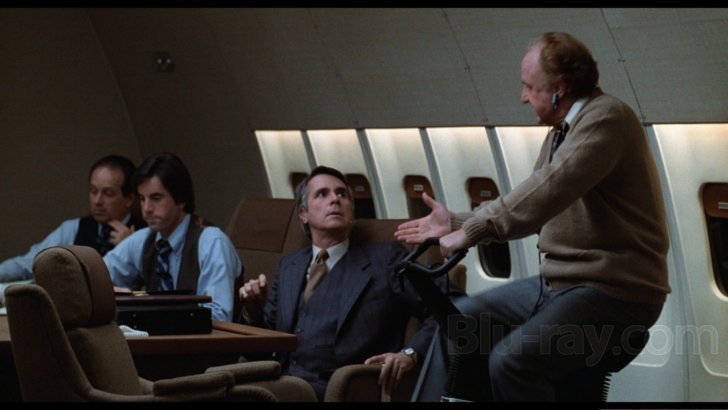
What I find most fascinating about this film is that nearly forty years after its theatrical release its summation of the socio-political reality in America seems remarkably accurate. And yet, this summation is often times borderline surreal. (On the other hand, if you start comparing big chunks of the film with the news reports the networks are producing lately, you are likely going to conclude that I am seriously exaggerating because a lot of the surreal material is now very real). If you are going to experience Hal Ashby's film for the first time now, you are in for quite a treat because Criterion's new 4K restoration is wonderful. In fact, it is the best presentation of the film that I have seen to date. VERY HIGHLY RECOMMENDED.
Similar titles
Similar titles you might also like

Shampoo
1975

Nashville
Paramount Presents #24
1975

Faces
1968

The Great Dictator
1940

The Darjeeling Limited
2007

First Reformed
2017

Paris, Texas
1984

Paths of Glory 4K
1957

Local Hero
1983

Do the Right Thing 4K
1989

Blue Jasmine
2013

Solitary Man
2009

Five Easy Pieces
1970

McCabe & Mrs. Miller 4K
1971

Mr. Smith Goes to Washington
1939

Rushmore
1998

The Fisher King
1991

The Last Hurrah
Limited Edition to 3000
1958

Modern Times
1936

Short Cuts
1993
